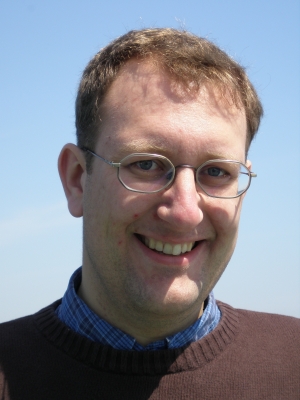
 Christoph Pfrommer
Christoph Pfrommer
- wish to extend and deepen their understanding of theoretical physics;
- are interested in astronomy and astrophysics; or
- (intend to) carry out a masters thesis or Ph.D. dissertation on an
astronomical or astrophysical subject.
- Overview and background:
- What is a galaxy cluster? Insights from observations at various wavelengths
- The homogeneous Universe: geometry, dynamics, and content
- What is a galaxy cluster? Insights from observations at various wavelengths
- Evolution of the dark component:
- Growth of perturbations
- Statistics and non-linear evolution, power spectra
- Spherical collapse model and connection to perturbation theory
- Press-Schechter mass function, halo density profiles, virial masses
- Growth of perturbations
- Evolution of the baryonic component:
- Non-radiative physics
- Entropy and convective instability
- Scaling relations (ideal and real)
- Shocks and jump conditions
- Entropy generation by smooth accretion and hierarchical merging
- Entropy and convective instability
- Radiative physics
- Radiative cooling and star formation
- Energy feedback (supernovae, active galactic nuclei)
- Transport processes of gas:
turbulence, conduction, thermal stability (without and with magnetic fields)
- Radiative cooling and star formation
- Non-thermal processes
- Origin and transport of magnetic fields, magneto-hydrodynamic turbulence
- Acceleration of cosmic rays (to first and second order), transport equation
- Origin and transport of magnetic fields, magneto-hydrodynamic turbulence
- Non-radiative physics
- Cluster physics informed by different observables:
- Optical: galaxy properties and virial theorem
- Transforming galaxy populations: ram pressure, tidal effects, dynamical friction
- Weighting clusters (1): virial theorem
- Transforming galaxy populations: ram pressure, tidal effects, dynamical friction
- Gravitational lensing
- Deflection angle, lens equation, Einstein radius, lensing potential
- Weighting clusters (2): strong and weak cluster lensing
- X-rays: gastrophysics at high-resolution
- Weighting clusters (3): hydrostatic equilibrium masses (and biases)
- Kinematics of shocks and cold fronts
- Probing kinetic equilibrium with collisionless shocks
- Width of cold fronts - magnetic draping
- Weighting clusters (3): hydrostatic equilibrium masses (and biases)
- Sunyaev-Zel'dovich (SZ) effect: the thermal energy content
- Thermal and kinetic SZ effect
- Properties and SZ scaling relation, SZ power spectrum
- Thermal and kinetic SZ effect
- Radio halos and relics: watching powerful shocks and plasma physics at work
- Optical: galaxy properties and virial theorem
- Voit, G.M.:
Tracing cosmic evolution with clusters of galaxies, 2005, RvMP 77, 207
- Bartelmann, M.: Lectures on Cosmology
- Peacock, J.: Cosmological physics. Cambridge University Press
- Peebles, P.J.E.: Principles of physical cosmology. Princeton University Press
- Padmanabhan, T.: Structure formation in the universe. Cambridge University Press
The Physics of Galaxy Clusters
Clusters of galaxies are the largest and most recently gravitationally-collapsed objects in the Universe. Hence they provide us the opportunity to study an "ecosystem" - a volume that is a high-density microcosm of the rest of the Universe. Clusters are excellent laboratories for studying the rich astrophysics of baryons and dark matter. At the same time, they are extremely rare events, forming at sites of constructive interference of long waves in the primordial density fluctuations. Hence, they are very sensitive tracers of the growth of structure in the universe and the cosmological parameters governing it, which puts them into focus of constraining the properties of Dark Energy or to test whether our understanding of gravity is complete.
This lecture will explain how clusters form and grow. We will encounter the rich and interesting astrophysics that governs the physics of dark matter and baryons in clusters. We will see how we can take advantage of these physical processes to observe clusters and deepen our understanding of the underlying fundamental physics. To this end we will frequently use the powerful technique of order of magnitude estimates, a very useful tool for contemporary research in astrophysics. The lecture aims at students who
The (hand-written) lecture notes will be continuously updated and is available as a
Contents:
Credit Points:
There won't be exercise classes. Students who wish to obtain credit points can choose one research paper from a selection of "classical papers" (provided by the lecturer) that they have to read and present at a mini-symposium (which will be held in the end of the lecture series). Other students are expected to actively participate with questions. Diploma students can obtain a certificate for this lecture which can be used for acceptance in astronomy as a minor subject for the diploma. Bachelor- and Masters students can use the credit points for this lecture as usual.The collection of papers and the assignment can be obtained as a